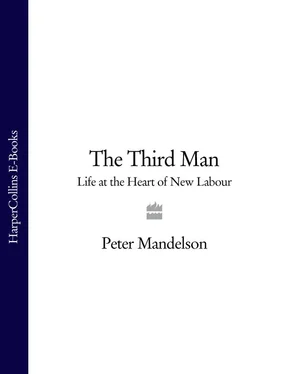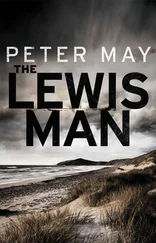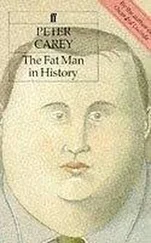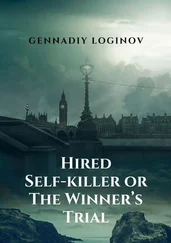I arrived at Walworth Road with two all-consuming aims. The first was to do well at my new job. Despite my brave, and evidently successful, effort to sound supremely self-confident before the interview panel, I feared that I was supremely unqualified. Three years’ experience producing cerebral political television would not necessarily equip me to manage all of Labour’s day-to-day communications with an almost universally hostile press. It certainly hadn’t given me the skills or the experience to handle the other half of my brief: every aspect of the party’s campaigning, from pamphlets, posters and policy launches to preparations for a general election that was probably less than two years away. My other goal was to play my part in ensuring that Neil Kinnock’s vision of Labour, not Tony Benn’s or Ted Knight’s, won out. That would turn out to be harder still.
Tony Benn’s Bristol South-East constituency had been abolished by boundary changes before the 1983 election, and he had failed to be selected for the replacement seat, so it had been left to Party Chairman Eric Heffer to carry the Bennite banner in the contest for leader. With Labour still in collective shock from the scale of our defeat, Neil trounced Heffer. His only serious challenger, Roy Hattersley, was from the right of the party. But Benn was back now, having been returned to the Commons in a by-election at Chesterfield in March 1984, and was de facto leader of a vocal leftist core on the NEC. The traumatic year-long miners’ strike had also hurt Labour, and Neil. The party was again associated in the public mind with the vote-killers of 1983: ideological infighting, rhetorical excesses and trade union militancy. Neil would later say he wished he had got on top of the issue at the start, by denouncing the NUM for having failed to hold a proper national ballot. Instead, he was left twisting in the wind, feeling he couldn’t support the strike, and couldn’t disavow it either. The only benefit from his months of agony was that he and those around him had used the period to plan for a fightback against the far left, and a determined effort to reposition the party. Neil’s assault on Militant at the party conference had been the first step.
It is difficult to convey, twenty-five years on, how enormous the obstacles were. The Bennites and their fellow travellers were not the only barrier to the huge repair job we faced. Their Old Socialist certitudes had a resonance that went beyond their core supporters. Even many who understood that a state-run economy, unquestioned support for the unions or unilateral nuclear disarmament were impractical in late-twentieth-century Britain – and that they were certainly a guarantee that we would not get back into government – felt them to be somehow authentically Labour . With the radical conservatism of Mrs Thatcher taking hold in Downing Street, and Ronald Reagan’s in the White House, they felt almost automatically that we should be on the other side of the argument.
And it was an argument. Since September 1981 a group of passionately anti-nuclear women had planted themselves in a ‘peace camp’ at the RAF base at Greenham Common in Berkshire, in protest against the US Cruise missiles that were stationed there. The Campaign for Nuclear Disarmament was enjoying a new lease of life. Mrs Thatcher was not only standing shoulder-to-shoulder with Reagan in agreeing to base US nuclear missiles in Britain. As she embarked on large-scale privatisation of the core of the old state economy, and curbed trade union strike powers, the default position for many in Labour was that whatever the Tories were for, we must be against. I understood this impulse. From my own Labour background, I knew it was part of the glue that held the whole party together. I recalled my own childhood experience of the annual disarmament marches from the nuclear research base at Aldermaston to Trafalgar Square. My family never marched, but in our own Labour Suburb way, we would pack my father’s Sunbeam with a roast-chicken picnic, drive to the outer reaches of the capital and watch as the throng made its way towards its final rallying point.
The problem was that a modern, relevant Labour Party could not operate on atavistic instinct. We could not make policy on the simple basis that everything that the Tory government – a comfortably re-elected Tory government – did was wrong. That risked not just failing to take on board policies that might be right, but could leave us opposing policies of far greater benefit to our own voters than anything we were offering. That was clearly the case with Mrs Thatcher’s programme to allow millions of council tenants to buy their own homes.
The structure of the party, too, was unrecognisably different then. As leader, Neil was in charge. Up to a point. The National Executive Committee, and indeed party conference, nowadays hold only nominal sway over policy. The trade unions wield nothing like the block-vote power they did then. But when I moved into my tiny third-floor office at Labour HQ, their influence was very real. The NEC, in particular, was the final voice on everything from paperclips to policy on nuclear weapons.
My immediate boss was the party’s new General Secretary, Larry Whitty. Over time, Larry and I would develop a good working relationship, but at the beginning we were on different wavelengths. A lifelong trade union man, he had a sentimental attachment to many of the policies and practices of Labour as it then was, and felt a kind of deference towards Tony Benn. I had been, at best, his second choice for the job. He had hoped for Nita Clarke, Ken Livingstone’s press chief at the Greater London Council, and would almost surely also have preferred David Gow, the Scotsman ’s labour correspondent. At least Larry did not share the hostility of many others in Labour to modern communications techniques, which were seen as somehow Tory , and unclean. But he did worry that the changes I might bring about in Labour’s policy presentation would impact on the policies themselves, and that I would tread on the toes of those formally in charge of making them in the NEC. He was nervous that, as John Prescott had warned, I would ‘put my nose in the politics’. In this, Larry got me absolutely right.
Despite my private doubts, from the moment I arrived at Walworth Road I projected a sense of confidence. Partly, this was bravado. Partly, it was because I knew that any chance of my succeeding depended on it. But in one crucial sense I was confident. I was absolutely secure in my conviction that as long as we were saddled with the policies, the mindset and the public image that had led to our débâcle in 1983, Labour would never again be a party of government. And I was absolutely determined to help pull us back from oblivion. I may have lacked experience, even skills, at the start. But I did know what was wrong. Most of Britain’s voters, and almost all of the media, disliked us. Worse, they had simply stopped listening to what we said, or at least taking it seriously. My work in television had given me insight into and experience of modern communications. My job, which I set out to accomplish with a drive that sometimes bordered on obsession, was to make everything about Labour look and sound modern too.
I began, as I did whenever I embarked on a new job throughout my political life, by learning what I didn’t know, focusing on the most pressing problems, and taking early steps to fix them. I was very fortunate to know – or at least to have met – someone who I hoped could help me with all of this. I was first brought together with Philip Gould by Robin Paxton when I was at Weekend World . Philip was ‘in advertising’, Robin told me. He was clever, and a passionate Labour supporter. We met briefly before I left LWT, at a dinner hosted by Philip’s then girlfriend, an up-and-coming publisher named Gail Rebuck. In the intervening year, life had changed for all of us. The small firm Gail had co-founded, Century Press, had done so well that it took over the larger, better-known Hutchinson. She and Philip had married. Philip had set up his own communications consultancy. And I was at Walworth Road. Now, we arranged to talk again, over dinner at Robin’s home in Islington.
Читать дальше












